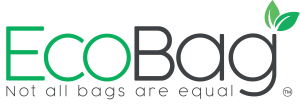Transforming Plastic Waste through Pyrolysis: A Sustainable Solution SEPCO and Ecobag pioneering ambitious new pyrolysis project in South-East Asia
Introduction
Plastic waste is a global environmental concern, with millions of tons of plastic being discarded each year. While recycling is a common method to manage plastic waste, not all plastics can be effectively recycled, and a significant amount still ends up in landfills or the environment, causing pollution and harm to ecosystems. One promising solution to address this issue is pyrolysis, a process that transforms plastic waste into valuable products while mitigating environmental damage. In this article, we will explore the concept of pyrolysis involving plastic waste and its environmental and economic benefits.
Understanding Pyrolysis Pyrolysis is a thermochemical decomposition process that involves the heating of organic materials in the absence of oxygen. This process breaks down the complex polymers in plastics into simpler hydrocarbons and other valuable by-products. The absence of oxygen during pyrolysis prevents the formation of harmful gases like dioxins and furans, which are common in incineration.
The Pyrolysis Process
1. Collection and Sorting: Plastic waste is collected and sorted to remove contaminants such as metals, paper, or other non-plastic materials.
2. Pre-processing: The sorted plastic waste is shredded into smaller pieces to facilitate the pyrolysis process.
3. Pyrolysis: The shredded plastic is then subjected to controlled heating in a reactor at temperatures typically ranging from 300°C to 800°C. During this process, the plastic waste is broken down into gases, liquids, and char.
4. Cooling and Condensation: The gases produced during pyrolysis are cooled and condensed into valuable liquid products. The liquid products can be further refined to obtain useful chemicals, such as fuels, solvents, and chemical feedstocks.
5. Solid Residue: The char left behind can be used as an inert material for construction, as a soil conditioner, or in other applications, reducing the environmental impact of plastic waste.
Environmental Benefits
1. Reduced Plastic Pollution: Pyrolysis helps to reduce the amount of plastic waste that enters landfills or pollutes oceans and ecosystems.
2. Lower Greenhouse Gas Emissions: Compared to incineration, pyrolysis produces fewer greenhouse gases due to the absence of oxygen and the ability to capture and utilize some of the generated gases.
3. Energy Recovery: The liquid products obtained from pyrolysis can be used as an energy source, reducing the reliance on fossil fuels.
Economic Benefits
1. Resource Recovery: Pyrolysis can recover valuable resources from plastic waste, including hydrocarbon-based fuels and chemicals, which can be sold or used in various industries.
2. Job Creation: Establishing pyrolysis facilities can create employment opportunities in waste collection, processing, and plant operation.
Challenges and Considerations
While pyrolysis offers many advantages, there are some challenges and considerations to keep in mind:
1. Initial Investment: Setting up pyrolysis facilities can require a substantial initial investment, which may be a barrier for some regions or organizations.
2. Regulatory Compliance: Ensuring compliance with environmental regulations is essential to prevent potential air and water pollution from pyrolysis operations.
3. Feedstock Quality: The quality and composition of plastic waste can vary, affecting the efficiency and quality of pyrolysis products.
Conclusion
Pyrolysis is a promising technology for addressing the growing problem of plastic waste. It provides an environmentally friendly and economically viable solution for transforming plastic waste into valuable resources while reducing the burden on landfills and the environment. As we strive for a more sustainable future, pyrolysis deserves consideration as a key component of our waste management strategies.

